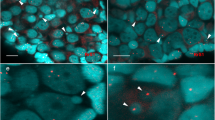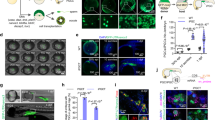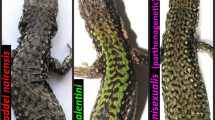Abstract
THE work of Bounoure1 and Blackler2 on three anuran species has shown that, in fixed and sectioned material, and after the application of suitable stains, the embryonic sites that contain primordial germ-cells may be recognized at all developmental stages from the fertilized egg to the tadpole. A technique for the transfer of the gonocytes between one embryo and another has been devised as a first step in a genetical analysis of abnormal embryos produced in this department by the transplantation of somatic nuclei into unfertilized eggs of Xenopus.
This is a preview of subscription content, access via your institution
Access options
Subscribe to this journal
Receive 51 print issues and online access
$199.00 per year
only $3.90 per issue
Buy this article
- Purchase on Springer Link
- Instant access to full article PDF
Prices may be subject to local taxes which are calculated during checkout
Similar content being viewed by others
References
Bounoure, L., Ann. Sci. Nat., 10e Ser., 17, 67 (1934).
Blackler, A. W., J. Embryol. Exp. Morph., 6, 491 (1958).
Nieuwkoop, P. D., and Faber, J., “Normal Table of Xenopus laevis” (North-Holland Pub. Co., 1956).
Elsdale, T. R., Fischberg, M., and Smith, S., Exp. Cell. Res., 14, 642 (1958).
Mintz, B., and Russell, E. S., J. Exp. Zool., 134, 207 (1957).
Author information
Authors and Affiliations
Rights and permissions
About this article
Cite this article
BLACKLER, A. Transfer of Germ-Cells in Xenopus laevis . Nature 185, 859–860 (1960). https://doi.org/10.1038/185859a0
Issue Date:
DOI: https://doi.org/10.1038/185859a0
Comments
By submitting a comment you agree to abide by our Terms and Community Guidelines. If you find something abusive or that does not comply with our terms or guidelines please flag it as inappropriate.



